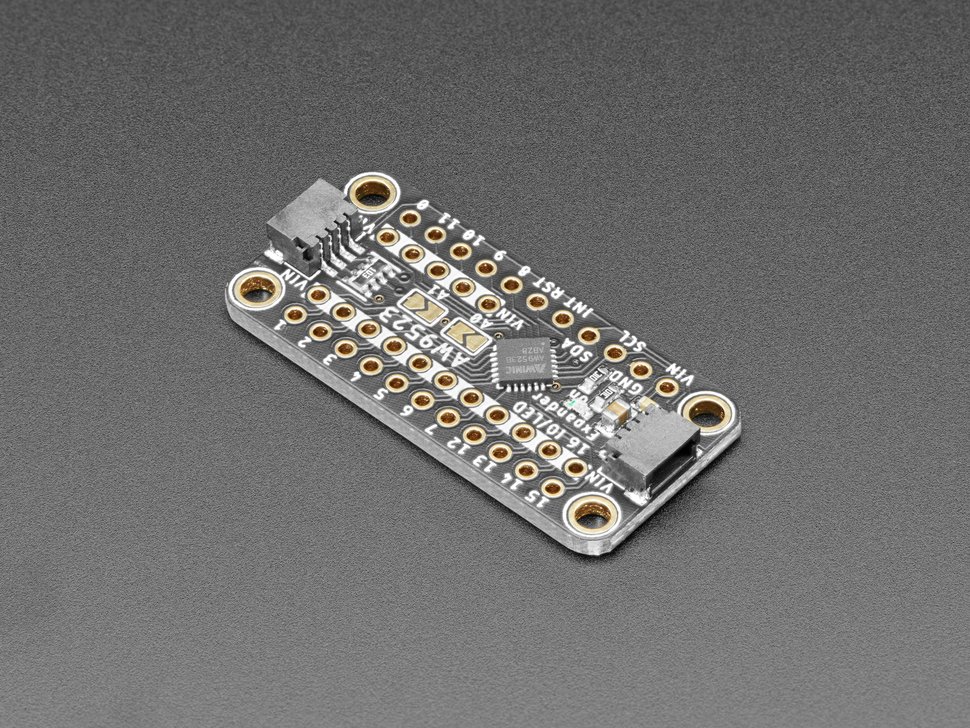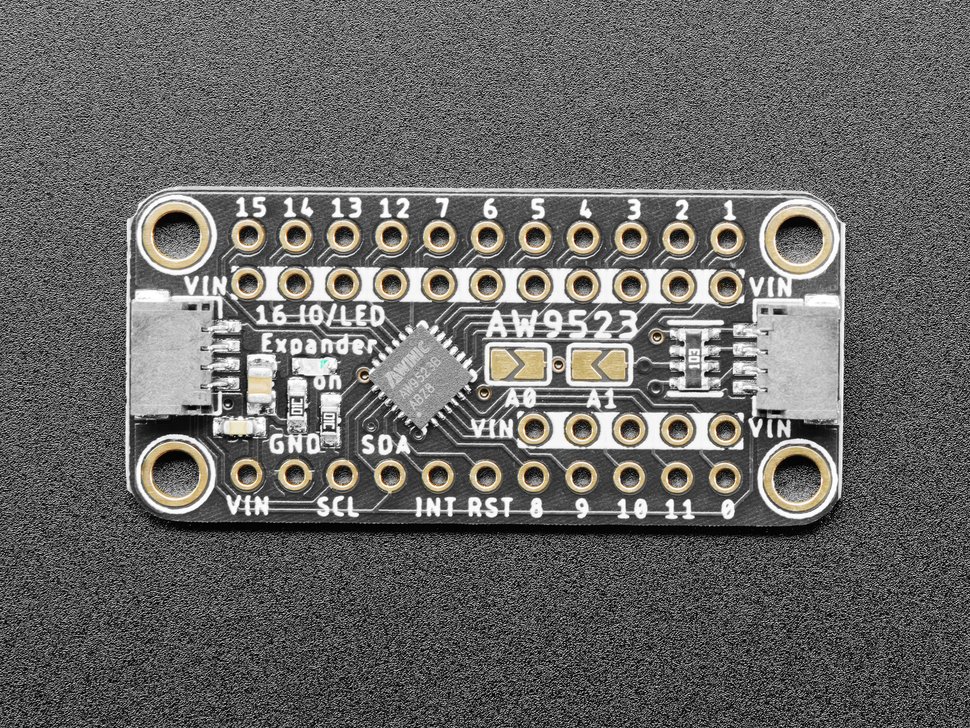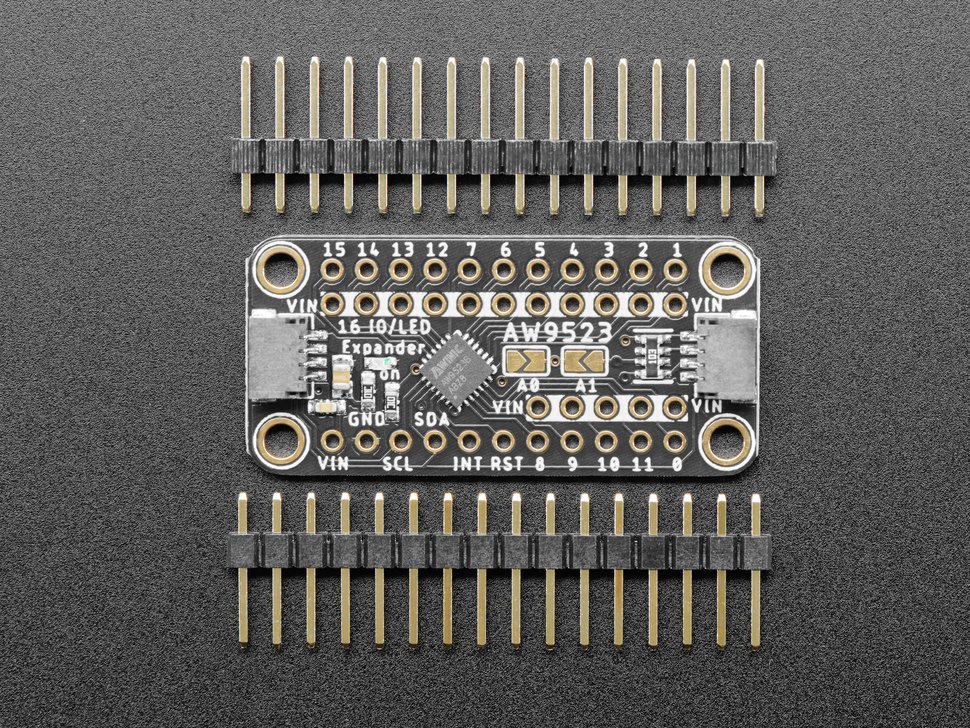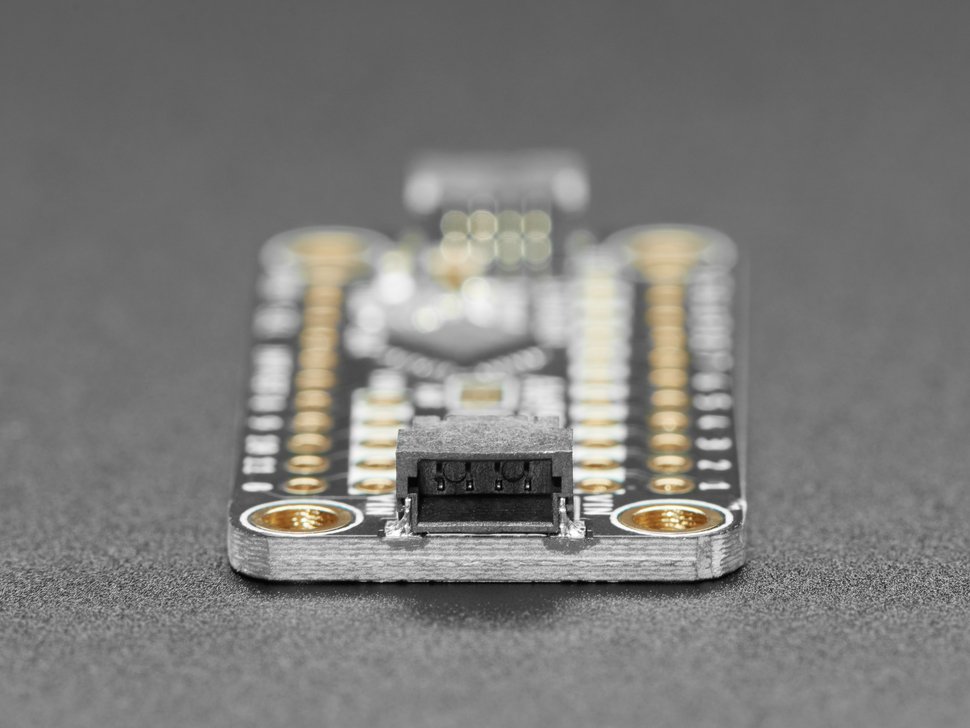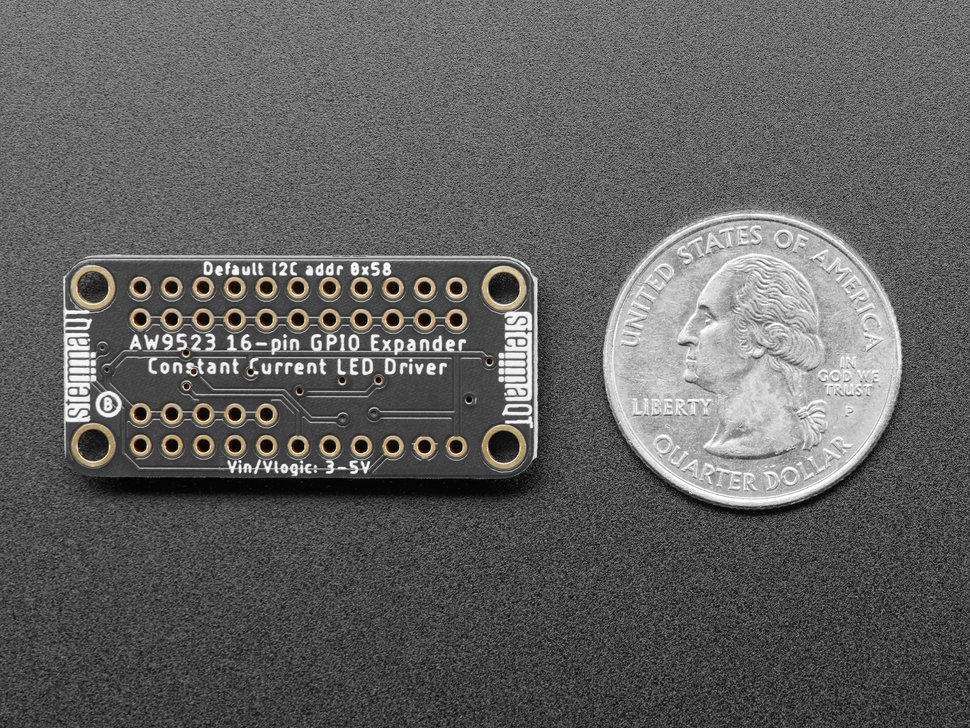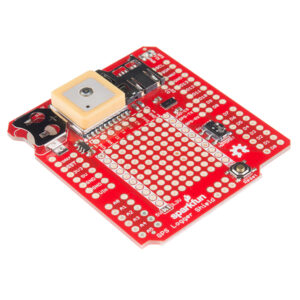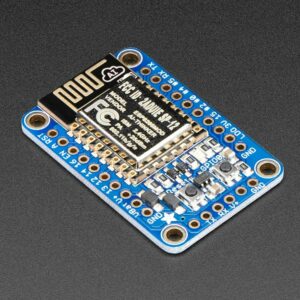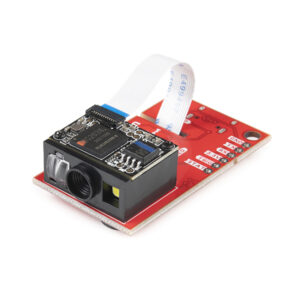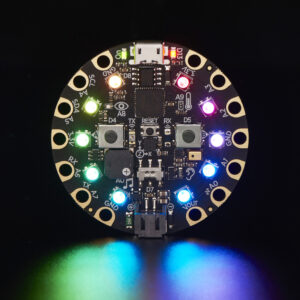Adafruit AW9523 GPIO Expander and LED Driver Breakout – STEMMA QT / Qwiic
5.50 د.ك
Expand your project possibilities, with the Adafruit AW9523 GPIO Expander and LED Driver Breakout – a cute and powerful I2C expander with a lot of tricks up its sleeve.
In stock
Description
Expand your project possibilities, with the Adafruit AW9523 GPIO Expander and LED Driver Breakout – a cute and powerful I2C expander with a lot of tricks up its sleeve.
GPIO expanders work like this: you have a board with some number of GPIO but not enough for your project – maybe you need more buttons or LEDs. Connect it over I2C and then you can send/receive I2C commands to control the GPIO pins to write and read them. It’s going to be slower than direct GPIO access, but maybe that doesn’t matter if it takes a millisecond instead of a microsecond. You only need the two I2C pins, and you can even share the I2C port with other sensors and devices. Heck, you can even add more expanders for massive I/O control!
The AW9523 is a twist on the common I2C expander:
- First up, its very affordable – who doesn’t love that?
- It has 16 I/O pins, that’ll double most boards’ pin count
- Four I2C address options, so you can connect 4 expanders to one bus
- Each pin can be an input or an output
- IRQ output can alert you when input pins change value
- This chip does not support internal pull-ups or pull-downs, you will need to add an external resistor if you need one
- However, it does have 8-bit linear constant-current LED dimming support so you can connect LEDs without resistors and have great looking dimming without PWM
- The first 8 pins can be configured as open drain (as a group)
The lack of internally-configurable pull’s is a bit of a bummer, but we think the expander more than makes up for it with the constant-current LED drive. If you’re using an expander to add lots of controllable LEDs, this board will make it very easy. Since its constant-current, you don’t need resistors in line with each LED (although it won’t hurt if you do): simply connect the LED anode to one of the many VIN pads, then connect the cathode to the GPIO pin.
Of course, you can control any buttons or other I/O with the pins – we just think this board is particularly suited to LED driving. There’s also an interrupt output, you can enable the pin-change IRQ for any pins so you can be notified when its time to read the I/O states.
One oddity about this chip is the default I2C address determines the initial boot-state of the pins. Our libraries immediately soft-reset and configure all the pins to inputs and push-pull so you can expect the same behavior no matter what the I2C address is. However, we recommend you check the datasheet Table 1 to make sure this doesn’t affect your hardware.
We’ve written both Arduino and CircuitPython/Python libraries for the AW9523, so you can get started whether you have an Arduino-compatible UNO or a Raspberry Pi 4 – or anything in between.

